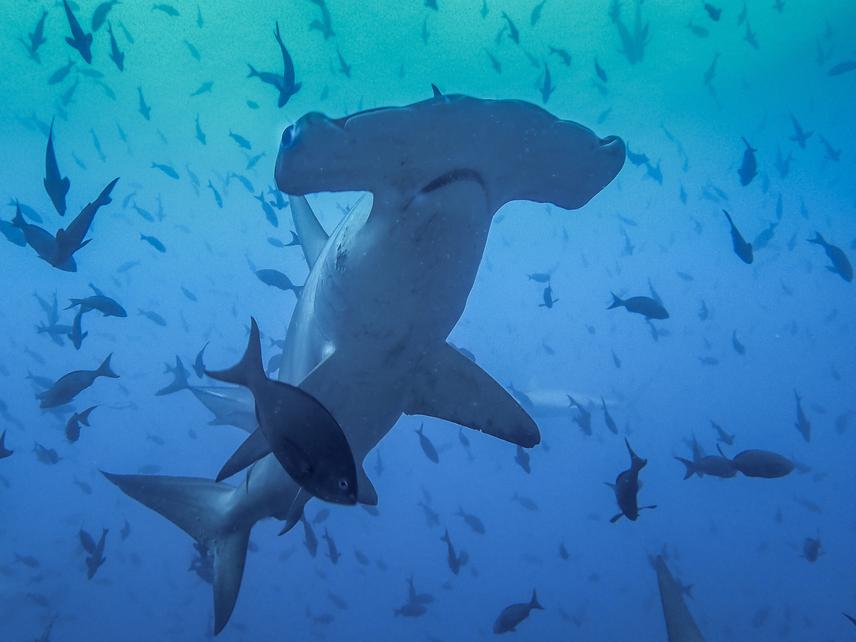Article featuring the project on Darwin Foundation.
Camila Arnés-Urgellés
This project aims to study climate variability impacts on the feeding behaviour of the endangered scalloped hammerhead shark by conducting stable isotope analysis on biopsy samples obtained during changing weather conditions, such as the current increases in sea surface temperatures (SSTs) across the Pacific Ocean and the predicted spring 2019 El Niño event.

The Galapagos Islands host large predator abundances, such as the scalloped hammerhead, Sphyrna lewini. This species is listed as ‘Endangered’ by the International Union for the Conservation of Nature (IUCN) and it is included in the appendix II of the Convention on the International Trade of Endangered Species (CITES) and appendix II of the Convention of Migratory species (CMS). Hammerheads are migratory and present high levels of connectivity between the Galapagos in Ecuador and other oceanic islands within the Tropical Eastern Pacific (TEP). However, despite the protection by the Galapagos Marine Reserve (GMR), hammerheads are still vulnerable to both legal and illegal commercial fishing when travelling outside these boundaries. In addition, sharks are also affected by the climate variability that occurs in the TEP during extreme weather events, which impacts, such as Increase in sea surface temperature, stratification of the water column, and increase on diseases incidence have been linked to alterations in hammerheads populations (Klimley and Jorgensen 2003).
Climate change is predicted to increase the frequency and intensity of events like El Niño (Cai et al. 2014). According to NOAA, there was a strong El Niño in the years 2016-2017 and another event is predicted for the spring of 2019. El Niño significantly affects the structure of pelagic ecosystems limiting the available habitat for predators and changing the biomass of potential prey.
We will conduct feeding behaviour studies on hammerhead sharks using stable isotope analysis that will reveal the sharks’ trophic position, diet, and distribution. Furthermore, by investigating feeding behaviour on top predators during changing weather events we can use this information as a window into the future impacts of climate change on the ecology of this keystone species. If hammerheads that occupy tertiary trophic levels significantly alter their feeding behaviour during changing weather conditions, this can have direct impacts on secondary consumers. Moreover, hammerheads sit at the top of food chains and help maintain healthy ecosystems, therefore, their reduction has negative top-down effects that cascade throughout the entire food web. These sharks act as umbrella species, which means that studying and conserving their populations will also help protect other species down the food chain. Finally, due to the high population connectivity throughout the TEP, our findings can be related to other hammerhead populations as they are equally exposed to climate variability impacts.